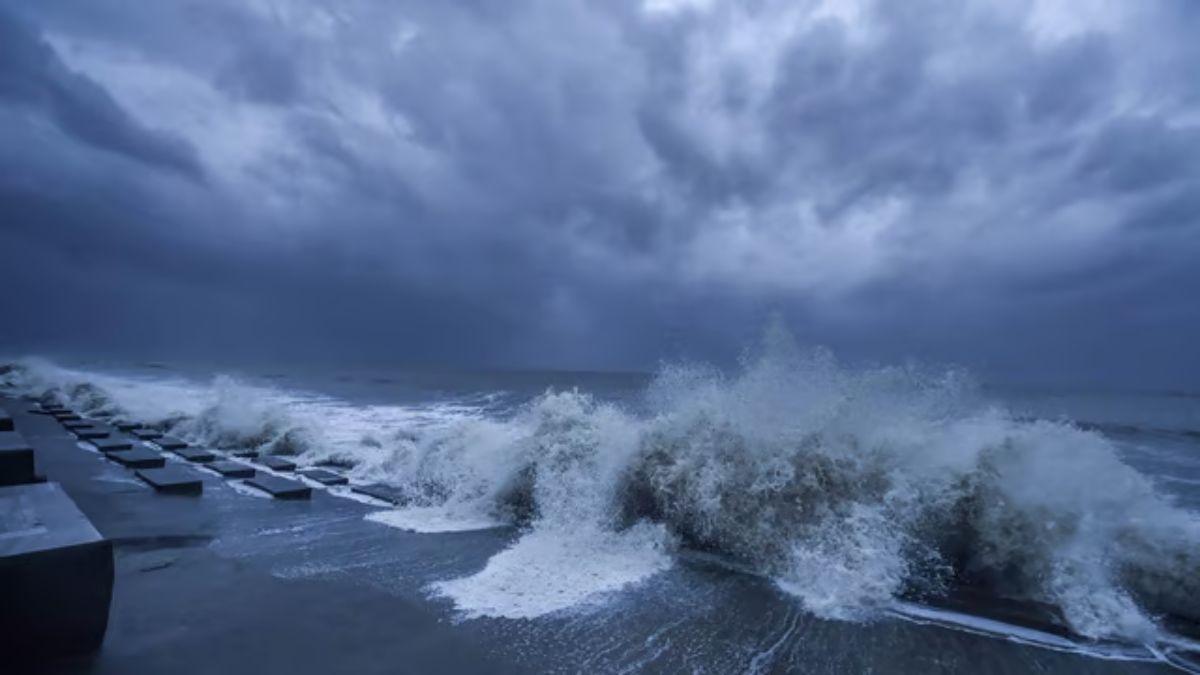The Indian Meteorological Department (IMD) issued a warning regarding an impending cyclonic storm expected to hit the Odisha-West Bengal coast this week.
The IMD on Monday said the cyclonic system originating over the east-central Bay of Bengal is forecasted to intensify into a severe cyclonic storm by Wednesday. Upon reaching its peak, the cyclone will be designated as “Dana.”
Set to strike between West Bengal’s Sagar Island and Odisha’s Puri late Thursday night and early Friday morning, Cyclone Dana is predicted to bring heavy rainfall and winds reaching speeds of up to 120 kmph along the coastline, said the weather department in a post on X.
As the cyclone nears, governments are stepping up measures to implement all necessary measures to mitigate its potential devastation.
But have you ever wondered what the name Cyclone Dana means? Why do cyclones receive distinct names? And what is the process behind cyclone naming? We have the answers.
What does ‘Dana’ mean?
The name ‘Dana’ or ‘Danah’ carries cultural significance in Arabic, translating to “the most perfectly sized, valuable, and beautiful pearl.” This term is commonly used in the Arab states of the Persian Gulf, regions renowned for their traditional pearl diving heritage.
Furthermore, in Persian, the term Dānā also means ‘Wise,’ reports India Today.
The name ‘Dana’ was put forward by Qatar as part of an international cyclone naming system overseen by the World Meteorological Organization for the North Indian Ocean.
Also read: Cyclone Dana to strike Odisha-Bengal coast: How devastating is it expected to be?
Why naming cyclones matters
The main purpose of naming cyclones is to make them easier to track and remember. Instead of relying on numerical coordinates or technical jargon, using a storm’s name simplifies communication for meteorologists, government authorities, and the public.
Distinct names also help in reporting and disseminating crucial information across various media platforms, ensuring timely updates and warnings. Furthermore, when several storms occur at once, names help distinguish between them, reducing potential confusion.
How are cyclones named?
The tradition of naming storms has a long and evolving history.
In the beginning, storms were not given specific names but were often referred to by the date or location of their occurrence. This practice shifted in the late 1800s in the Caribbean, where storms were named after saints from the Roman Catholic calendar.
After World War II, meteorologists began naming storms using female names to establish a more organised system.
In 1953, the US Weather Service introduced a phonetic alphabet of female names. Over time, due to criticism over gender representation, male names were also included.
By 2000, a group of countries under the WMO/ESCAP (World Meteorological Organisation/United Nations Economic and Social Commission for Asia and the Pacific) — comprising Bangladesh, India, the Maldives, Myanmar, Oman, Pakistan, Sri Lanka, and Thailand — decided to begin naming cyclones in the region.
Following each country’s submission of name suggestions, the WMO/ESCAP Panel on Tropical Cyclones (PTC) finalised the list.
In 2018, the panel was expanded to include five more nations: Iran, Qatar, Saudi Arabia, the United Arab Emirates, and Yemen.
When proposing cyclone names, countries must follow basic guidelines. These include ensuring the names are culturally neutral, easy to pronounce, and inoffensive to any group.
Cyclone names are submitted by member countries during annual or biennial meetings, with each name needing to meet specific criteria for approval.
Names are rotated periodically, with new suggestions replacing those that have been retired due to their association with particularly deadly or destructive storms.
Cyclones in the North Indian Ocean are named according to a pre decided list, contributed by all the countries in the region.
— Ahmed_Shabin (@Ahm3dShabin) October 21, 2024
The name for the upcoming cyclone is Dana, Tropical Cyclone Dana
More on tropical cyclone naming: https://t.co/Z3eGgPPUi5 pic.twitter.com/tsymLJdK9u
In 2020, the Indian Meteorological Department released a list of 169 cyclone names, which included 13 suggestions from each of the 13 member countries.
Recent cyclone names included, Cyclone Tauktae (named by Myanmar, meaning “gecko”), Cyclone Nivar (named by Iran, meaning “light” or “breeze”) and Cyclone Amphan (named by Thailand, meaning “sky”)
After this list is exhausted (which probably may take more than a decade or even decades), a fresh list will be offered by the members.
How are authorities preparing for Cyclone Dana?
Cyclones frequently impact Odisha’s coastline, and authorities are taking the threat seriously in implementing precautionary measures to mitigate potential damage.
On Sunday evening, a high-level meeting chaired by Odisha Chief Secretary Manoj Ahuja was held to assess the situation.
“Our top priority is zero casualty during a disaster. The administrative machinery of coastal districts likely to be affected has been kept on high alert and has been asked to keep cyclone shelters ready.
“Pregnant women who may deliver in the next 15 days in these districts would be shifted to hospitals by October 22,” special relief commissioner, Deoranjan Kumar Singh was quoted by Times of India, as saying.
#WATCH | Odisha: On preparedness for Cyclone 'Dana', Special Relief Commissioner, Deoranjan Kumar Singh says, "As of today, as per the report received from the IMD, there is a circulation form over Bay of Bengal near Andaman and Nicobar island. In the next 12 hours is likely to… pic.twitter.com/gLEAE99rLN
— ANI (@ANI) October 20, 2024
Authorities have also issued warnings to residents and tourists, advising against visiting seaside areas during the cyclone. Emergency response teams, including heavy machinery operators, have been mobilised to address any crisis, Singh added.
The National Disaster Relief Force (NDRF), Odisha Disaster Rapid Action Force (ODRAF), and fire services have been placed on standby. Fishermen have been cautioned not to venture into the sea, said IMD.
Further, IMD has issued red and orange alerts for coastal districts that can face maximum brunt of the cyclone.
With input from agencies


)

)
)
)
)
)
)
)
)



